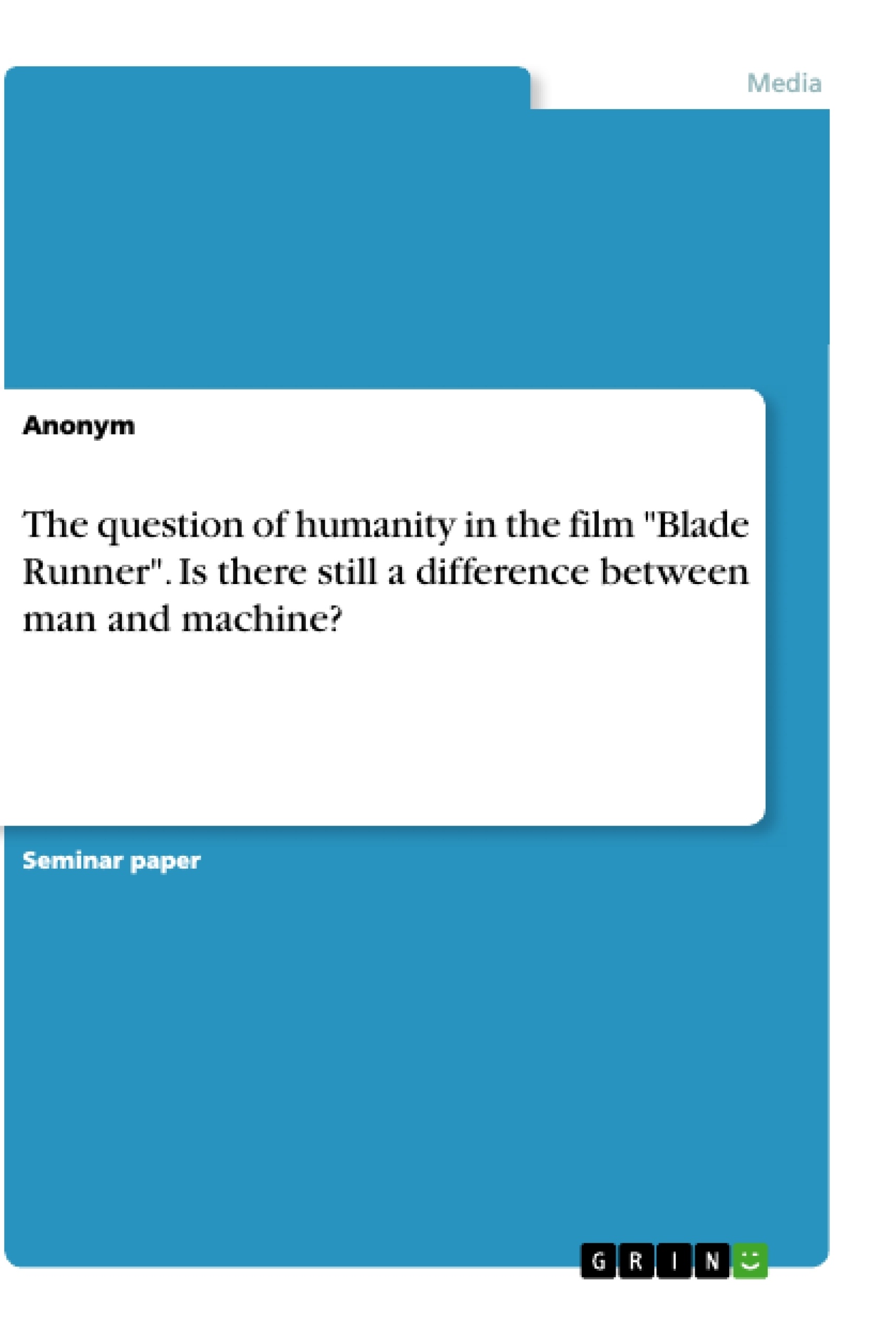This paper examines the question of humanity in the film "Blade Runner". The question of humanity represents a central theme in this science fiction film, directed by Ridley Scott and released in 1982. "Blade Runner", which is set in Los Angeles in the year 2019, narrates the story of Rick Deckard, who is part of a specific police force, named the blade runners. The futuristic society of 2019 has developed the technology to create replicants, human-like androids, designed by Eldon Tyrell and the Tyrell Corporation. Fearing that the replicants could become too human, they are banned on earth and live in off-world colonies. The blade runners are in charge of tracking down and retiring (killing) those replicants illegitimately residing on earth.
Inhaltsverzeichnis (Table of Contents)
- Introduction
- Humanity and Humanness
- What makes us human?
- Dehumanisation
- Humanity and Dehumanisation in Blade Runner
- Man versus machine
Zielsetzung und Themenschwerpunkte (Objectives and Key Themes)
This paper examines the concept of humanity and dehumanization in the context of the film Blade Runner, by analyzing Brook's definition of humanity and considering how humanity, humanness and human behavior are defined in the film. The paper explores whether replicants fulfill the criteria of humanness and investigates whether the film illustrates processes of dehumanization.
- Defining humanity and humanness in the context of Blade Runner.
- Analyzing the criteria of humanness and how replicants fulfill those criteria.
- Exploring the concept of dehumanization and its application in the film.
- Investigating the distinction between man and machine, specifically human and replicant.
- Examining the potential convergence or substitution of man and machine.
Zusammenfassung der Kapitel (Chapter Summaries)
The introduction sets the stage for the paper, exploring the definition of "human" in Blade Runner and introducing the central theme of humanity in the film. It discusses the context of Blade Runner's futuristic society and the role of replicants as artificial humans.
The chapter on "Humanity and Humanness" explores the question of what makes us human. It examines various characteristics of human beings and their behavior, including language, prosociality, imitative behavior, empathy, symbolic behavior, and culture. The chapter then delves into the concept of dehumanization, exploring different definitions and theories, including the Infrahumanization Theory, the Dual Model of Dehumanization, and the Stereotype Content Account.
Schlüsselwörter (Keywords)
Humanity, Humanness, Dehumanisation, Blade Runner, Replicants, Artificial Humanity, Man versus Machine, Moral Community, Out-group, In-group, Infrahumanization Theory, Dual Model of Dehumanization, Stereotype Content Account.
- Quote paper
- Anonym (Author), 2015, The question of humanity in the film "Blade Runner". Is there still a difference between man and machine?, Munich, GRIN Verlag, https://www.grin.com/document/1037816



